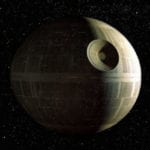 Weird Stuff
Weird Stuff  Weird Stuff
Weird Stuff  Animals
Animals 10 Inspiring Tales of Horses Being Human
 Mysteries
Mysteries Top 10 Haunting Facts About the Ghost Ship MV Alta
 History
History 10 Surprising Stories About the Texas Rangers
 Humans
Humans 10 Philosophers Who Were Driven Mad by Their Own Theories
 Miscellaneous
Miscellaneous 10 Video-Game-Worthy Weapons and Armors from History
 Weird Stuff
Weird Stuff 10 Psychics Who Accurately Predicted Wartime Events
 The Arts
The Arts 10 Pieces of Art Inspired by a Broken Heart
 Health
Health 10 Science Fiction-Sounding New Medical Treatments
 History
History 10 Surprising Facts About the Father of Submarine Warfare
 Weird Stuff
Weird Stuff 10 Times Real Laws Were Based on Bizarre Hypotheticals
 Animals
Animals 10 Inspiring Tales of Horses Being Human
 Mysteries
Mysteries Top 10 Haunting Facts About the Ghost Ship MV Alta
Who's Behind Listverse?

Jamie Frater
Head Editor
Jamie founded Listverse due to an insatiable desire to share fascinating, obscure, and bizarre facts. He has been a guest speaker on numerous national radio and television stations and is a five time published author.
More About Us History
History 10 Surprising Stories About the Texas Rangers
 Humans
Humans 10 Philosophers Who Were Driven Mad by Their Own Theories
 Miscellaneous
Miscellaneous 10 Video-Game-Worthy Weapons and Armors from History
 Weird Stuff
Weird Stuff 10 Psychics Who Accurately Predicted Wartime Events
 The Arts
The Arts 10 Pieces of Art Inspired by a Broken Heart
 Health
Health 10 Science Fiction-Sounding New Medical Treatments
 History
History 10 Surprising Facts About the Father of Submarine Warfare
10 Weirdest Ways Scientists Are Using Everyday Things
Your house is full of everyday objects that you only use for one, maybe two things. You’ve probably never looked at a tampon and wondered, “What else could I possibly use this for?” At least, we assume you’ve never done that.
Part of the job of a scientist is to constantly question assumptions, look at things from different angles, and find new uses for old things. The result is the use of household objects in some creative ways.
10 Gelatin
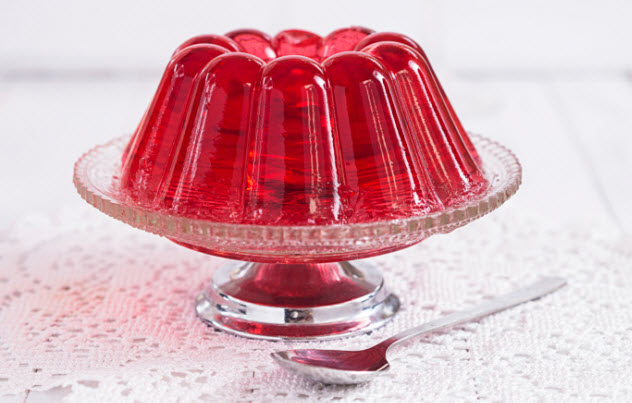
You know gelatin as the stuff in your JELL-O, some frosted cereals, and sometimes even yogurt. Where you won’t find gelatin is in your clothes.
Yet.
While you probably think of gelatin as being gooey and jiggly in consistency, it’s actually a powder made from crushed skin, cartilage, bone marrow, and other animal by-products. This makes it a perfect candidate for a sustainable, less wasteful material from which to make clothes.
Researchers have succeeded in spinning yarn out of gelatin. The yarn is then treated with a spray of formaldehyde gas and lanolin, producing a strong, warm yarn you can spin into gummy-bear mittens (sugary flavor not included).
Using gelatin to make clothes isn’t all that weird, either. The textile industry experimented with using vegetable and food by-products as far back as a century ago, until the petroleum-based industry took over.
Today, as we look for greener and less biologically harmful ways to live, scientists—and designers—are looking for more natural sources for what we wear. It might sound strange now, but you probably won’t give a second thought to wearing JELL-O socks, bamboo dresses, or sour milk shirts in the future.
9 Sunlight
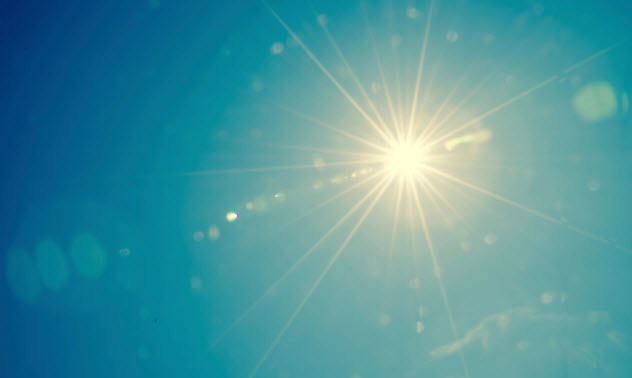
What’s one thing that’s so abundant in your house you probably don’t even think about it? Sunlight! It’s too bad there’s no way to bottle that stuff.
Scientists thought so, too. So they came up with a way to bottle sunlight.
Use of solar power is on the rise, with about half a million solar power systems installed in the US, a number which is expected to keep increasing as installation becomes more affordable. Solar arrays gather and store solar power, but they’re still limited due to the nation’s dependency on liquid fuels.
So scientists at Harvard University set out to turn sunlight into a liquid fuel, and they succeeded. The result is an artificial leaf system that uses sunlight to split water into its elemental components then uses bacteria to convert the resulting hydrogen and oxygen into the liquid fuel isopropanol.
In other words, science has found a way to mimic photosynthesis. The next hurdle is to surpass the 1 percent efficiency that plants have. Eventually, we may be filling up our cars with liquid fuel made with the power of the Sun.
8 Tampons
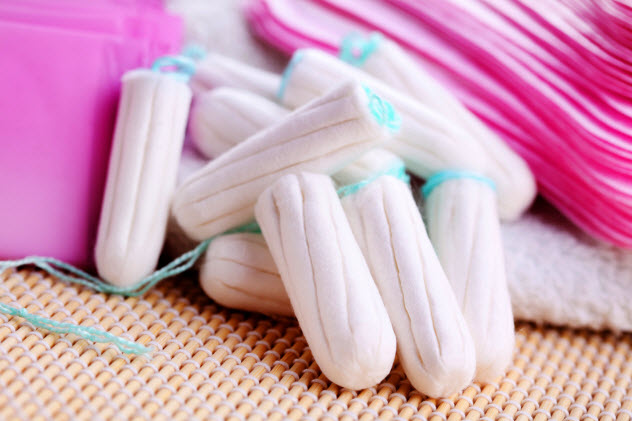
Towns and cities generally have two kinds of sewage systems. One collects waste from homes and funnels it into sewage facilities, while the other collects rainwater and drains it into streams or rivers. Unfortunately, rainwater drainage sometimes gets contaminated by the sewage system, which in turn contaminates the fresh water sources into which it drains.
So how can you figure out if there’s been a contamination? One way is to thread fiber optic cables through the sewage system in search of the root of the contamination, which can cost up to $13 per meter ($43 per ft). Another method is through spectrophotometers, which are expensive and as difficult to use as they are to pronounce.
That’s where tampons come in. Tampons are made of absorbent, untreated cotton. When this material comes into contact with the chemicals in toilet paper, laundry detergent, shampoo, or many of the other chemicals you’d find in a sewage system, it absorbs the chemicals. Even a tiny bit of exposure makes the tampon glow under UV light for up to 30 days afterward.
This makes tampons the perfect tool for finding where the water is contaminated. Researchers start at the end—the polluted stream or waterway—and work their way backward using the tampons until they find the contamination’s point of origin.
Unlike other methods for finding contamination, tampons are cheap, easy to find practically anywhere, and generally don’t need any special training to operate.
7 Potato
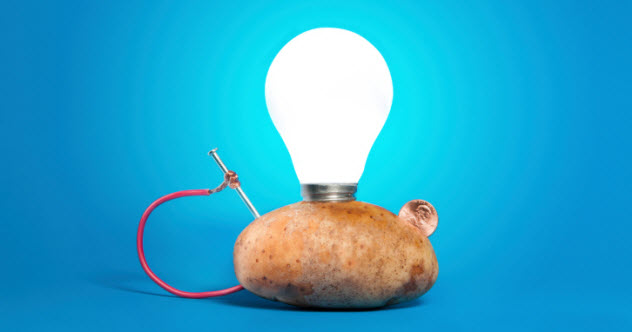
Ever made a battery out of a potato? Scientists have, and it’s surprisingly effective. A battery powered by potatoes and LEDs can light up a room for over a month.
Potatoes have gone from being flower buttonhole decorations to being the fifth most important crop in the world. They might also be the answer to finding a natural power source that isn’t costly, doesn’t require much special equipment, and lasts a while.
Researchers found that boiling a potato for just eight minutes then cutting it up into chunks made the potato an effective “salt bridge,” a space through which electron currents can move. A kit for making a DIY potato battery includes things you might remember from your high school science class: two alligator clips and two electrodes. The parts are small, easy to replace, and inexpensive. All you have to do is provide the boiled potato.
The potato battery might be just the thing for developing countries, where electricity is scarce. There’s just one problem: these same countries tend to have malnourishment problems and need the potatoes to eat. The researchers acknowledge the issue with potentially rerouting a food crop into a source of power. Looks like it’s back to the drawing board for this one.
6 Pen Ink
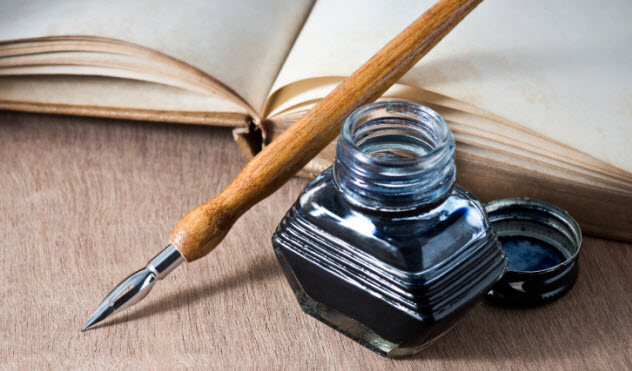
While you’ve been doodling with a pen, scientists have been using that same pen to store energy.
Most pen ink is made from oil-based dye, designed to flow well, dry fast, and not smear. Regular pen ink also makes supercapacitors more powerful.
A capacitor stores energy as a static charge. Imagine rubbing your feet on a carpet then touching something. You’re storing energy then releasing it through your finger. Supercapacitors are used in any machines that need to store large amounts of energy, like wind turbines and hybrid electric cars.
When a research team from China went in search of ways to increase the efficiency of supercapacitors, they didn’t have to look beyond their own homes. Regular pen ink makes a great coating for supercapacitors.
The team discovered that a supercapacitor coated in pen ink made a very thin outer layer that was bendy and could hold up to 10 times more charge than other capacitors. Malleable supercapacitors can lead to energy-filled cloth, which can then lead to wearable electronics. Just imagine, your next iPhone might come with an iShirt.
5 Kitty Litter
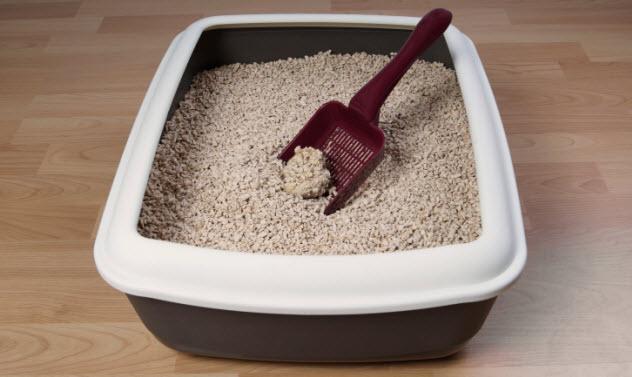
In February 2014, alarms rang out at a nuclear waste facility in New Mexico. A 55-gallon container of radioactive waste had burst open, releasing radioactivity into the air. It took a few months of investigation to uncover the culprit behind the accident: Someone had bought the wrong kind of kitty litter.
Kitty litter might absorb your cat’s urine really well, but it also absorbs radioactive waste. Until the 1950s, cat litter was made from sand, dirt, or ashes. Today, kitty litter uses superabsorbent clay, which doesn’t leave tracks through the house like the previous varieties.
The clay and absorbent properties make kitty litter into a great stabilizer. Mixing it in a tank of nuclear waste prevents the waste from reacting with the environment. At some point, the nuclear waste facility decided to be a little greener and started using organic kitty litter.
Unlike regular kitty litter, organic brands use vegetable and plant fibers, materials that are also excellent fuel. About 500 gallons of nuclear waste were contaminated with this brand, turning them into volatile time bombs. Luckily, many of the “bad” batches were stored underground, while the others were reinforced with double containers.
Why isn’t that on the label of kitty litter? “Strong enough for your cat, strong enough for nuclear waste.”
4 Plastic Bags
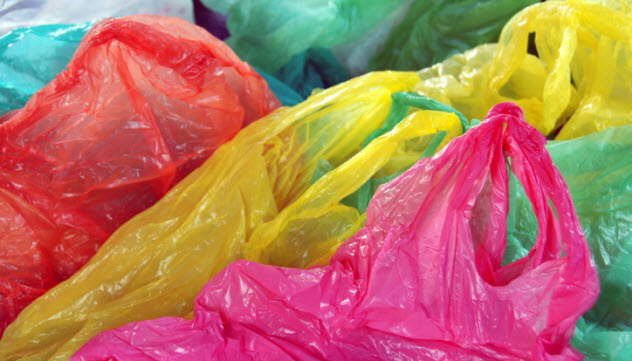
Plastic bags are notoriously bad for the environment. They are made from petroleum, which you may recognize as that stuff the world is running low on. They are difficult and hazardous to manufacture and take between 10 and 20 years to decompose. When the bags get into the environment, animals can choke and suffocate on them. In some parts of the world’s oceans, there are six times more plastic bags than plankton.
In an effort to reduce the strain of plastic bags on the world, some states and countries have started charging for choosing plastic bags at the store.
What can we do with all the plastic bags clogging up our landfills? Some researchers discovered that the bags can be converted into some pretty useful things.
For example, plastic bags can be used to create diesel fuel. They can also be converted into natural gas, gasoline, a solvent called naphtha, and engine and hydraulic oils. As plastic bags are made out of fuel in the first place, it’s possible to recover almost 80 percent of that fuel from the bags.
This is great news for the environment and landfills everywhere because it gives plastic bags a potential use, and the world’s natural resources won’t go completely to waste.
3 Catnip
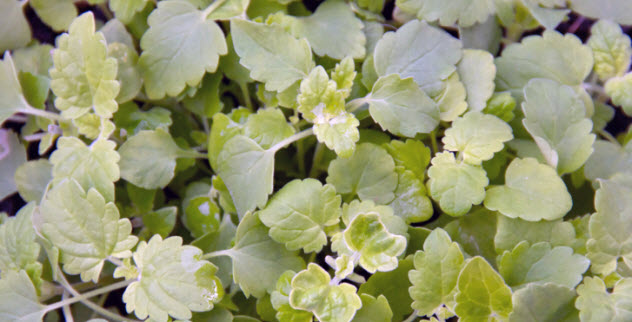
If you have a cat, you probably have a bunch of dried-out, browning catnip lying around your house somewhere. Catnip is a member of the mint family, but it’s better known for making cats go on harmless but intense acid trips. Kitties take one whiff of the plant, and it sends them into a euphoric frenzy, rubbing on everything, rolling on the ground, and generally acting incredibly high.
That is, if your cat is responsive to the plant. Only about half of cats react to catnip for some genetic reason that no one understands. Whatever the scientific reason, either catnip turns your cat into the happiest feline in the world for about 10 minutes, or it gets a sniff and a “meh.”
Cats aren’t the only creatures that go crazy for the mint leaves of catnip. Bugs are sensitive to the oil in catnip, too. But instead of loving it, insects hate the stuff. Lab tests from 2001 show that catnip is 10 times more effective at repelling mosquitoes than DEET, and a study from 2010 found that it has the same effect on bloodsucking flies that attack livestock.
According to entomologist Chris Peterson, no one understands why catnip makes such a good insect repellent. Maybe the bugs can’t stand the smell, or maybe catnip acts as an irritant to them.
Sadly, it might be a while before we see ads for an insect repellent that attracts cats the way Axe cologne supposedly attracts swarming women. Follow-up studies showed that the oil in catnip was not quite as effective as DEET when used on skin. Despite this, many people opt to use catnip oil as insect repellent because it’s nontoxic and 100 percent natural. For some reason, people don’t like applying chemicals to their exposed skin.
2 Baby Powder
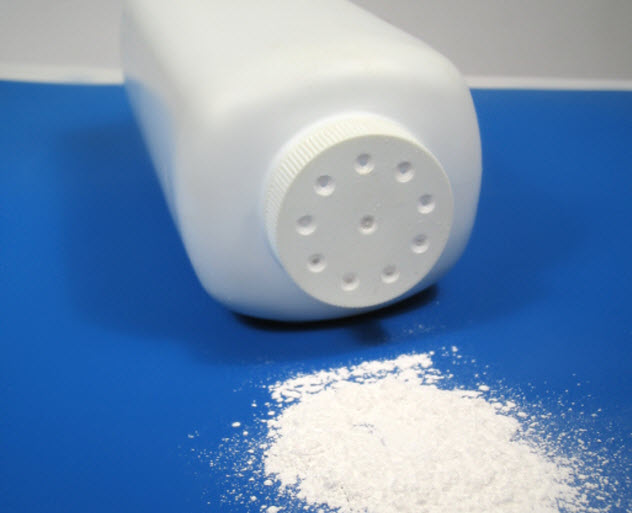
Baby powder was originally used to prevent diaper rash. But it’s no longer recommended by doctors because the powder is easy to inhale and can damage a baby’s delicate lungs. Some women use baby powder between their thighs to keep them from chafing, although studies have shown that this practice may increase the chance of ovarian cancer.
That leaves very little use for the product. Unless you’re the scientist who uses it to cause volcanic eruptions.
Benjamin Andrews studies the destructive power of volcanoes. He’s been close enough to eruptions that it felt like he was getting roasted. With volcanoes killing nearly 900 people per year, Andrews is dedicated to understanding volcanoes better in order to reduce these numbers.
The problem with studying volcanic eruptions is that you can’t get too close. The real danger of volcanic eruptions isn’t the slow-moving lava. It’s the ash, dirt, and debris that fly into the air when the eruption occurs.
To study the blasts, Andrews has built a volcanology simulator, another way of saying that he makes miniature volcanoes erupt in his lab. Andrews buys big tubs of talc powder, the main ingredient in baby powder, to study the patterns made by debris under different circumstances.
The powder is light, soft, and easy to see under laser light. This makes it perfect for studying volcanic eruptions, even if the result looks like a trippy laser light show with the fog machine cranked up full blast.
1 Glitter
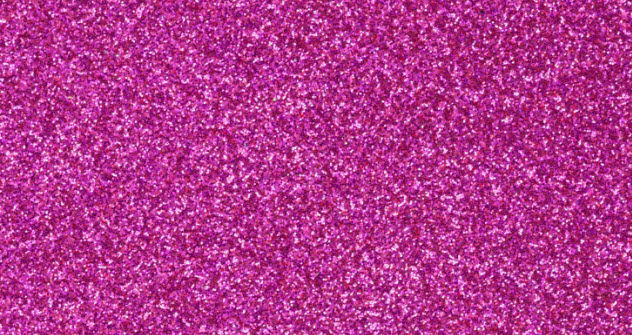
Glitter has received a bad name in recent years. It’s so annoying to clean up that some mean-spirited companies have sprouted up to let you send “glitter bombs” to your enemies. In December 2014, glitter found an unlikely home where it could be appreciated: NASA.
NASA is in the process of building a giant telescope, the James Webb Space Telescope, which is meant to replace the Hubble Space Telescope in 2018. The James Webb is big in every sense of the word, costing $8 billion to build and weighing around seven tons (if you count the spacecraft that holds it).
According to NASA, that’s too big and too expensive.
The space organization has been looking for alternatives for future telescopes. For one thing, they want to reduce the size of the 400-kilogram (800 lb) mirror necessary for such a powerful telescope.
Instead of using a solid mirror, NASA engineers came up with the Orbiting Rainbow, which releases a cloud of reflective, glitter-like particles. With a cost and weight that’s a fraction of the standard mirror, the particles can be used as a floating-cloud mirror to let NASA glimpse faraway stars and exoplanets.
Yuliya spends her time making fortresses out of paper clips. She will never look at a tampon the same way again. You can hire her to write words for you here.

